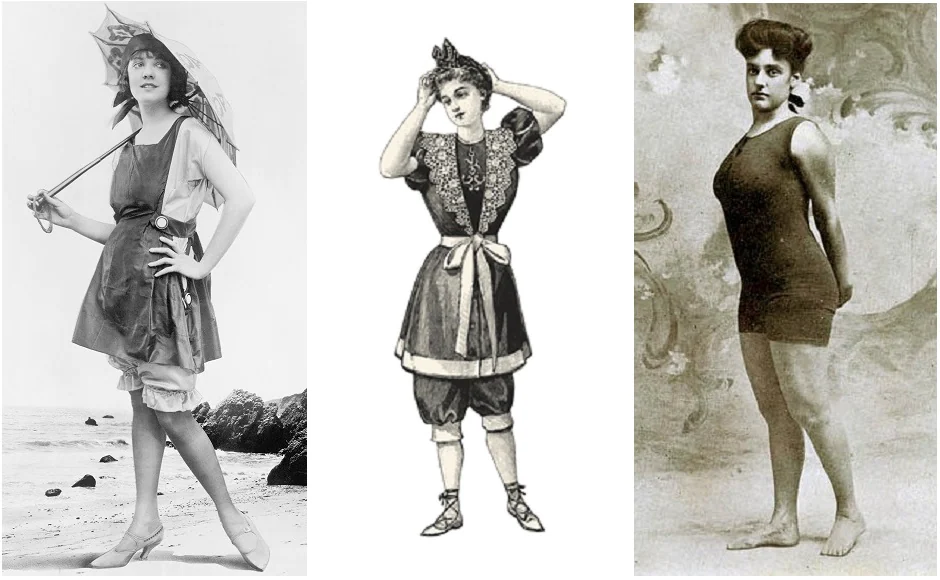The evolution of the bathing suit has undergone significant changes over time, reflecting the shifting societal attitudes towards modesty, fashion, and the acceptance of various body types. Let’s journey through history to explore how the bathing suit has evolved from its humble beginnings to the stylish and diverse swimwear we know today.
In the early 19th century, bathing suits were conservative and modest. Women’s bathing attire consisted of long dresses and bloomers, designed to preserve their modesty while in the water. Men wore one-piece suits that covered their upper bodies and extended to their thighs.
Transitioning to the late 19th century, bathing suits became slightly more revealing as attitudes towards modesty began to loosen. Women’s bathing dresses featured shorter skirts and exposed their arms, while men’s suits showed more of their upper bodies.
In the early 20th century, swimwear experienced a dramatic transformation. Women’s bathing suits took on a more practical design, featuring shorter skirts and form-fitting silhouettes. Men’s suits evolved into tighter-fitting one-pieces, allowing for more freedom of movement.
Keep reading about, Bathing Suit Evolution:
During the 1920s, the “flapper” style influenced swimwear, with women embracing more revealing and sporty one-piece suits. Men’s swim trunks also became shorter and more streamlined.
As we entered the mid-20th century, the bikini made its debut, challenging societal norms and revolutionizing swimwear fashion. The bikini, with its daring two-piece design, faced initial resistance but soon gained popularity, becoming a symbol of empowerment and body positivity.
Throughout the latter half of the 20th century, swimwear continued to evolve with the introduction of new materials and designs. One-piece suits with innovative cutouts and high-cut legs became fashionable, while men’s trunks evolved into various styles, from board shorts to briefs.
In the 21st century, swimwear has embraced inclusivity, with designers creating a wide range of styles to cater to different body types and preferences. High-waisted bottoms, tankinis, and swim dresses offer options for those seeking more coverage, while bikinis and one-pieces cater to varying levels of modesty.
In conclusion, the evolution of the bathing suit has been a fascinating journey of fashion and social change. From conservative and modest styles to the revolutionary bikini and inclusive designs of today, swimwear has adapted to reflect the values and tastes of each era.
Embrace the diversity of modern swimwear, let its evolution inspire your beach style, and appreciate the progress we’ve made in celebrating body positivity and individuality. As we celebrate the evolution of the bathing suit, we recognize the power of fashion to reflect societal attitudes and shape our perception of swimwear through the ages.




